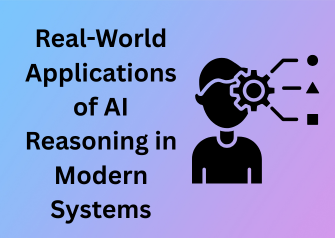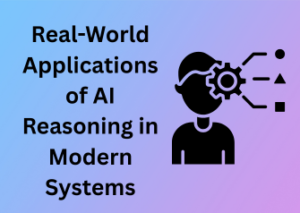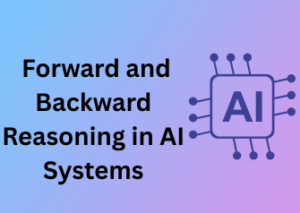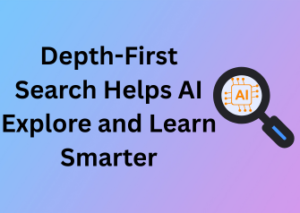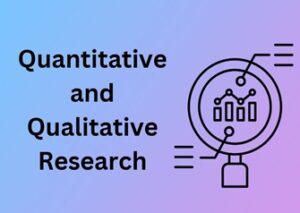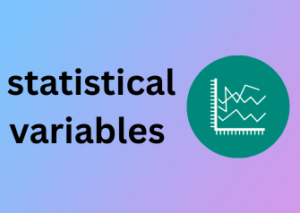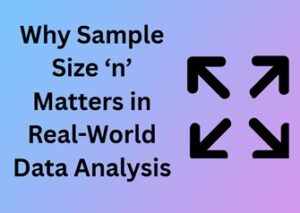Healthcare is one of the most critical aspects of our lives, and it’s no surprise that artificial intelligence (AI) is stepping up to revolutionize this space. Think about it: the more precise and timely healthcare can be, the better lives can be saved and improved. AI is not only excelling in diagnosing illnesses faster but also aiding in predicting potential conditions before they manifest. Buckle up as we explore how AI reasoning is reshaping healthcare, one prediction and diagnosis at a time!
AI in Diagnostics: Faster and More Accurate
Traditionally, receiving a proper diagnosis could take weeks, or even months. Today, thanks to advanced AI algorithms, the process is quicker and more accurate. AI tools can analyze vast datasets of patient histories, lab results, and imaging scans in a fraction of the time it previously took. This allows healthcare providers to focus on what truly matters: personalized patient care.
For instance, consider how AI-powered imaging tools are now capable of detecting anomalies like tumors or fractures with astonishing precision. These systems can even identify patterns that might go unnoticed by the human eye, which is a game-changer for early cancer detection and monitoring chronic conditions such as diabetes.
Taking It a Step Further: Predictive Analytics
Here’s where things get even more exciting AI isn’t content with just diagnosing illnesses. It is now making strides in predicting them. Imagine a system that analyzes your health data, lifestyle habits, and genetic makeup to warn you about potential risks before you ever feel a symptom. Wouldn’t that be amazing?
For example, machine learning models can predict the likelihood of developing heart disease, enabling you and your doctor to take preventive measures early on. These insights empower patients to make informed decisions and reduce the burden on emergency care systems a win-win for everyone!
Benefits Beyond the Patient
While patients undoubtedly reap the rewards of AI advancements, healthcare professionals are also seeing immense benefits. AI is helping doctors, nurses, and other caregivers by reducing administrative tasks, streamlining workflows, and providing second opinions on complex cases.
Picture this: an AI assistant that sorts through hundreds of patient files and flags potential issues for the medical team to review. Not only does this save time, but it also minimizes errors and ensures that nothing critical gets overlooked. AI is truly enhancing collaboration across healthcare systems.
Ethical and Practical Considerations
Of course, with great power comes great responsibility. While AI can handle vast amounts of data at unbelievable speeds, the ethical aspects of patient privacy and data security cannot be ignored. Developers and healthcare institutions must work together to ensure that patient information is safeguarded and only used for its intended purpose.
Additionally, training AI to handle diverse populations is key. Bias in healthcare algorithms can lead to unfair outcomes, and inclusivity will be critical to ensuring that everyone benefits equally from these technological advances.
Streamlining E-Commerce Personalization with AI-Driven Insights
Let’s admit it, shopping has transformed from an occasional outing to a personalized digital experience tailored to our tastes. Ever wondered how an online store seems to know exactly what you’re looking for or worse, what you’ll crave tomorrow? The magic lies in artificial intelligence (AI). It’s quietly working in the background, revolutionizing how businesses interact with each of us, one click at a time.
How AI Personalization Works
At its core, AI gathers and analyzes data about individual shopping habits things like purchase history, items you’ve browsed, spending limits, or even timing preferences. Then, using machine learning algorithms, it identifies patterns and predicts your upcoming needs. The result? When you visit your favorite e-commerce platform, it feels like shopping with a best friend who just gets you.
Why is this Beneficial for Customers?
- Quicker Recommendations: Forget endlessly scrolling. AI narrows down your options, showcasing products that align with your preferences.
- Better Deals: AI highlights offers and promotions most relevant to your shopping habits, ensuring savings where they matter most.
- Enhanced User Experience: A seamless browsing adventure can save loads of time.
It’s like having a 24/7 personal shopping assistant who knows the difference between your love for colorful sneakers and absolute indifference toward winter boots!
E-Commerce Businesses are Thrilled with AI Too
It’s not just about shoppers benefiting from this personalization revolution. Businesses have tapped into the immense power of AI to convert casual visitors into loyal customers. Here’s how:
- Driving Engagement: Personalized recommendations mean more clicks, interactions, and ultimately, purchases. AI insights keep customers engaged while guiding them down the sales funnel.
- Inventory Management: AI algorithms assess purchasing trends to help retailers manage stock efficiently. Fewer unsold products mean fewer headaches and less waste.
- Building Stronger Relationships: By understanding each customer uniquely, businesses can craft marketing strategies that create emotional connections rather than generic spammed campaigns.
Ultimately, it’s a win-win scenario. Personalization leads to happier customers and thriving companies—a recipe for mutual success.
What’s Next in AI-driven Personalization?
The future is dazzling in this space. AI is continuously evolving, with advanced technologies like natural language processing (NLP) and computer vision set to supercharge personalization efforts. Imagine chatting with an AI bot that feels more intuitive than asking a sales associate in person or getting tailored suggestions based on the way you browse images. Creepy? Only if companies fail to balance personalization with customer privacy but the industry is well aware of these challenges. Responsible AI implementations ensuring ethical data use will remain a top priority.
Friendly Advice for Curious Shoppers
Before you jump in and enjoy the wonders of e-commerce personalization, take control of your data. Focus on platforms with transparent privacy policies and don’t hesitate to explore their settings for customizing what information they can track. It’s always better when AI is working for you, not the other way around!
Financial Systems Meet AI: A Perfect Match

In today’s fast-paced world, financial systems rely heavily on data-driven decision-making. But what happens when the sheer volume of data becomes too overwhelming for humans to process? Enter Artificial Intelligence (AI), a game-changer transforming how financial institutions make decisions, mitigate risks, and serve customers like never before. AI doesn’t just crunch numbers; it analyzes patterns, learns from data, and adapts to changes, allowing financial systems to operate smarter and more efficiently. Ready to dive into how AI is revolutionizing modern finance? Let’s go!
1. Navigating the Storm of Big Data
The financial world generates an enormous amount of data daily everything from stock market fluctuations to customer transactions. This data holds invaluable insights, but identifying trends in such massive datasets is impossible without AI.
- Predictive Analytics: AI can analyze historical market data to forecast future trends, helping investors make well-informed decisions. For example, it can predict stock movements or identify investment opportunities that human analysts might overlook.
- Improved Risk Assessment: AI dives deep into financial data to detect potential risks associated with loans or investments. It evaluates factors like creditworthiness and market conditions with near-instantaneous speed and precision, reducing chances of bad decisions.
2. AI and Fraud Detection: Keeping It Saf
Fraud is one of the biggest challenges in finance, costing businesses billions every year. Traditional methods of fraud detection are often slow and reactive. AI flips the script by being proactive, identifying suspicious activities before they escalate.
- With advanced pattern recognition, AI can spot unusual spending behaviors or anomalies in real-time, flagging potential cases of fraud.
- Machine learning models continuously ‘learn’ from new fraud techniques, staying one step ahead of evolving threats.
Think of AI as the detective behind the scenes, scrutinizing every transaction to keep your finances secure.
3. AI-Powered Financial Advisories
Ever heard of “robo-advisors”? These AI-driven tools are reshaping wealth management by providing personalized financial advice. Whether you’re saving for retirement or managing a portfolio, AI algorithms can analyze your financial goals, risk tolerance, and current market conditions to offer tailored strategies.
Unlike human advisors, AI is accessible 24/7, affordable, and free from emotional bias. It empowers individuals to take charge of their finances with confidence.
4. Optimizing Operational Efficiency
AI doesn’t just help on the customer-facing side; it also works wonders behind the scenes. By automating routine tasks like data entry, compliance monitoring, and document review, AI reduces operational costs and minimizes errors.
This allows financial institutions to focus on strategic initiatives, improving their overall efficiency and staying ahead in a competitive market.
Revolutionizing Logistics with AI in Real-Time Route Optimization
Imagine a world where delivery delays are nearly extinct, traffic bottlenecks are a problem of the past, and supply chains respond dynamically to ever-changing situations. Sounds magical, doesn’t it? Well, it’s not magic; it’s the power of AI bringing real-time route optimization into logistics. Let me walk you through how artificial intelligence is reshaping the world of logistics and transportation as we know it.
What Is Real-Time Route Optimization?
At its core, route optimization is the process of finding the most efficient path from Point A to Point B. Logistics companies have been doing this for decades. However, real-time route optimization powered by AI takes things to a whole new level. It’s not just about planning a route in advance; it’s about adapting in real-time based on dynamic variables like traffic conditions, weather changes, road closures, or even unexpected delivery requests. Sounds impressive, right?
How AI Does It Better
Human planners are pros at using fixed schedules and predefined assumptions, but life is unpredictable, and that’s where AI shines. Here’s why AI is such a game-changer:
- Massive Data Processing: AI algorithms can process insane amounts of data that would bog down even the most experienced human logistics planners. From live traffic conditions to package-based priorities, AI pieces it all together in seconds.
- Dynamic Decision-Making: Let’s say a sudden snowstorm hits a city. AI can quickly reroute delivery trucks to avoid blocked routes, all while ensuring delays are minimized.
- Predictive Analytics: AI doesn’t just respond to current conditions; it predicts future disruptions, like anticipating peak traffic times, and adjusts routes accordingly. It’s like having a crystal ball for supply chain efficiency!
Benefits for Everyone
So, why should we care? Real-time route optimization isn’t just for the industry giants like Amazon or FedEx; its ripple effects benefit businesses, customers, and the planet:
- Cost Savings: Shorter routes mean less mileage, reduced fuel costs, and faster deliveries. Anytime you’ve gotten a package earlier than promised, AI might deserve the credit.
- Happier Customers: Nobody likes waiting for their order longer than necessary. Precise delivery updates and quicker shipping make customers smile—always a win for businesses.
- Environmental Impact: Fewer miles traveled and optimized routes translate to reduced carbon emissions in transportation. AI makes logistics greener and friendlier to our planet.
AI in Action: Real-World Examples
If you think this all sounds futuristic, think again. Companies like UPS are already leveraging AI-driven route optimization through their Orion system, which reportedly saves millions of gallons of fuel annually. Similarly, ride-hailing services like Uber and Lyft use AI to match drivers with passenger routes that cut down on unnecessary travel. Impressive, isn’t it?
Turning Challenges into Success Stories
Of course, no innovation is without its hurdles. Increased reliance on AI brings concerns related to data privacy and the complexity of integrating AI with outdated systems. But here’s the good news: businesses investing in smarter logistics often see the long-term payoff far outweighing the hiccups along the way.
The Rise of Gaming AI
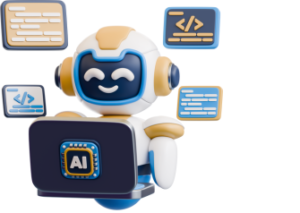
Video games have come a long way from the pixelated classics of the 80s. Modern gaming isn’t just about stunning graphics or bewildering storylines—it’s about creating worlds that feel alive, constantly adapting, and one step ahead of you. That’s where gaming AI (artificial intelligence) steps in. Today, gaming AI can drastically change how we experience games, not just as players, but as co-creators in an evolving narrative of skill, strategy, and surprise.
AI That Thinks Like a Player
Ever wondered why that enemy soldier always flanks you at the worst possible moment? Or how the NPCs (non-player characters) in some modern games seem so… human? Cutting-edge gaming AI is no longer about pre-determined patterns or predictable movements. Instead, it’s designed to “think” like a real player, analyzing gameplay and adapting its strategy in real time. This adaptive AI isn’t satisfied with just challenging you—it learns from you, studying your every move, your tactics, and even your weak points.
For instance, in strategy games like Starcraft II, AI opponents can push human players to new limits by understanding their behavior and countering it with strategies that evolve mid-game. This leads to truly dynamic gameplay—you’re no longer just solving a puzzle; you’re in a battle of wits against something that grows smarter the longer you play.
How Developers Make AI So Smart
Behind this magic lies some fascinating tech. Gaming AI often borrows approaches from machine learning (ML). With techniques like reinforcement learning, AI is “trained” to improve through trial and error, much like how humans learn. It plays thousands—sometimes millions—of game sessions behind the scenes to understand what works and what doesn’t.
Take OpenAI’s Dota 2 bot, for example. It learned to outmaneuver pro players not because it followed commands, but because it taught itself. It ran countless simulations, perfecting its reflexes and strategies until it could not only challenge human players but dominate them.
Why Adaptive AI Makes Gaming Better
So, what does this mean for us, the players? Three major benefits stand out.
- Unpredictability: Gone are the days of memorizing an AI’s routine. Adaptive AI ensures each encounter feels fresh, forcing you to stay on your toes.
- Fairer Challenges: Instead of overwhelming players with difficulty spikes, modern AI can scale intelligently, making a game tough but not impossible.
- Deeper Immersion: Having AI that mimics human-like behavior adds authenticity to the in-game experience, creating emotional engagement like never before.
Friendly AI? It’s Not All About Outsmarting You
While we often think of AI as our virtual rival, let’s not forget its collaborative roles. In many games, AI companions act as your allies, offering help when you need it most. Whether it’s Ellie covering you in The Last of Us or a traffic copilot in racing games, AI designed to support the player can enhance a sense of camaraderie and teamwork. These “friendlies” are programmed to add depth and balance to the gaming experience, proving that AI isn’t just here to fight against you it’s here to fight with you.
The Future of AI in Gaming
Looking ahead, the horizon is brimming with exciting possibilities. Developers are beginning to explore AI’s involvement in procedural storytelling. Imagine a game that adapts its narrative based on your decisions not just once, but continuously. Your choices, habits, and gameplay style could literally write the story as you go.
There’s also a growing conversation around ethical AI in gaming. After all, if an AI becomes too good, it risks alienating players rather than entertaining them. Striking the right balance will be key to maintaining enjoyment without frustration.
Smarter Cities: How AI Enables Proactive Urban Planning
Welcome to the future of cities! No, it’s not flying cars or high-speed tube travel (yet). We’re actually talking about something even more impactful: Artificial Intelligence (AI) in urban planning. While the buzzword “smart cities” might already be on your radar, AI is truly the engine that ensures cities grow smarter, bolder, and more livable for everyone. Let’s dive into how AI is transforming the way cities run, one algorithm at a time.
What Does “Proactive Urban Planning” Even Mean?
Before we geek out on AI, let’s set the stage with a simple explanation. Proactive urban planning is all about preparing for challenges before they arise, rather than reacting to problems when they’re already here. Imagine a city that foresees future road congestion, adjusts its infrastructure, and prevents it from happening that’s proactive! AI, with its predictive capabilities, makes this possible by analyzing mountains of data faster and smarter than any human could.
AI: The Urban Problem Solver Extraordinaire
So, where exactly does AI pitch in? From finding the best ways to ease traffic to figuring out where green spaces should go for maximum environmental impact, AI wears many hats. Let’s zoom in on some real-world examples:
- Traffic Flow Optimization: Ever wonder why some crowded cities have faster commutes than others? AI is often the reason. Smart traffic lights powered by AI can adapt to vehicle flow, easing congestion during rush hours and preventing those frustrating bumper-to-bumper situations. Less honking, more zen, right?
- Energy Efficiency: AI systems can monitor energy usage in real-time and optimize power distribution across a city. Think of it as AI being the ultimate electricity DJ, spinning renewable energy tracks to keep costs down and the lights on.
- Public Safety: Surveillance cameras might grab headlines, but AI’s role in ensuring safety goes deeper. Algorithms analyze data from cameras, social media, and emergency calls to predict potential safety risks and alert first responders faster.
Planning Green, Staying Clean
Another area where AI shines is helping cities become more sustainable. With cities contributing to a significant chunk of greenhouse gas emissions, AI steps in as an eco-warrior. Tools powered by AI can suggest where to plant trees to reduce heat islands or help city planners choose building designs that are both energy-efficient and cost-effective.
For example, in Singapore, AI is used to track air quality and predict pollution levels. These predictions allow governments to take action before pollution becomes a health crisis. Who wouldn’t want healthier air to breathe?
Making Cities More Inclusive
AI isn’t just for high-tech gadgetry or carbon-cutting initiatives. It’s also for people. By analyzing demographic data and feedback, AI helps city planners design inclusive spaces where everyone feels at home. From accessible public transportation to better housing strategies, AI ensures urban growth benefits all citizens not just a select few.
What’s Next for AI-Powered Cities?
The coolest part? We’ve barely scratched the surface. Future smart cities could include autonomous vehicles that communicate with infrastructure to eliminate crashes, or AI-powered disaster alerts that evacuate people before trouble strikes. The possibilities are as endless as the city lights at night.
Bolstering Cybersecurity with the Power of AI
In a constantly connected world where every click, upload, and download carries its own set of risks, cybersecurity is no longer just a technical concern it’s a necessity for everyone. The good news? Artificial Intelligence (AI) is stepping up to become the ultimate game-changer in the fight against cyber threats. But how exactly does it help, and why should we trust it?
Traditional Security: A Game of Catch-Up
Think about it: cyber threats are evolving every hour, if not every few minutes. Hackers don’t wait, and malware doesn’t sleep. Traditional cybersecurity systems, while effective at static threat detection, often function in reactive mode. They can only respond to threats after they’ve been identified, leaving organizations vulnerable to previously unseen tactics.
This is where AI reasoning completely flips the narrative. Rather than simply reacting to threats, AI predicts, monitors, and adapts in real-time. It learns from every interaction, making it capable of identifying both existing vulnerabilities and emerging ones.
How Does AI Strengthen Security?
AI’s role in cybersecurity is multi-faceted. Below are some key areas where it shines:
- Threat Detection: AI systems can analyze massive amounts of data almost instantaneously, identifying unusual patterns that might indicate an attack. This is especially critical when dealing with complex threats like Distributed Denial of Service (DDoS) attacks or ransomware.
- Predictive Analysis: Using machine learning, AI can predict emerging attack methods based on historical data, helping organizations stay one step ahead of cybercriminals.
- Real-Time Response: AI-driven systems don’t just identify problems they also initiate an immediate response. For example, they can isolate infected devices on a network, preventing further damage.
- User Behavior Monitoring: By analyzing user behavior, AI can identify insider threats or compromised accounts. Someone logging in from an unfamiliar location or performing unusual actions? AI spots it in a flash.
- Phishing Prevention: AI tools powered by natural language processing (NLP) dissect the content of emails to detect and neutralize phishing attempts before they reach an inbox.
Making Cybersecurity Accessible and Scalable
One of the standout benefits of AI in cybersecurity is scalability. You don’t need a fleet of IT specialists working 24/7 to guard your digital assets. AI tools are highly scalable, meaning they can be integrated into large organizations and adapted for smaller businesses as well. This democratization of advanced security solutions ensures that even startups or non-profits can take steps toward protecting their data.
And while it’s true that AI-powered cybersecurity solutions require initial investment, they often save countless hours and dollars in the long run by preventing data breaches and minimizing downtime.
Staying Ahead: Best Practices
A quick word of advice for both individuals and organizations: even the most sophisticated AI-powered security tools are only as good as the strategy behind them. Here are a few practical tips to ensure you get the most out of AI in cybersecurity:
- Update Regularly: Cyber threats evolve, so make sure your AI tools are always updated.
- Educate Users: Combine technology with good training. AI can assist, but informed users form the first line of defense.
- Choose a Trusted Provider: Not all AI solutions are created equal. Research and invest in highly recommended security platforms.
The Future of Cyber Defense
AI in cybersecurity isn’t just a “nice to have” anymore—it’s becoming the backbone of resilient digital defenses. By blending machine-speed analytics with proactive, forward-thinking algorithms, it provides a robust shield against even the sneakiest cyber threats. So, the next time you hear about the latest ransomware scare or phishing campaign, take a deep breath. Just remember: with AI on our side, we’re better equipped than ever to keep our networks, data, and peace of mind secure.

